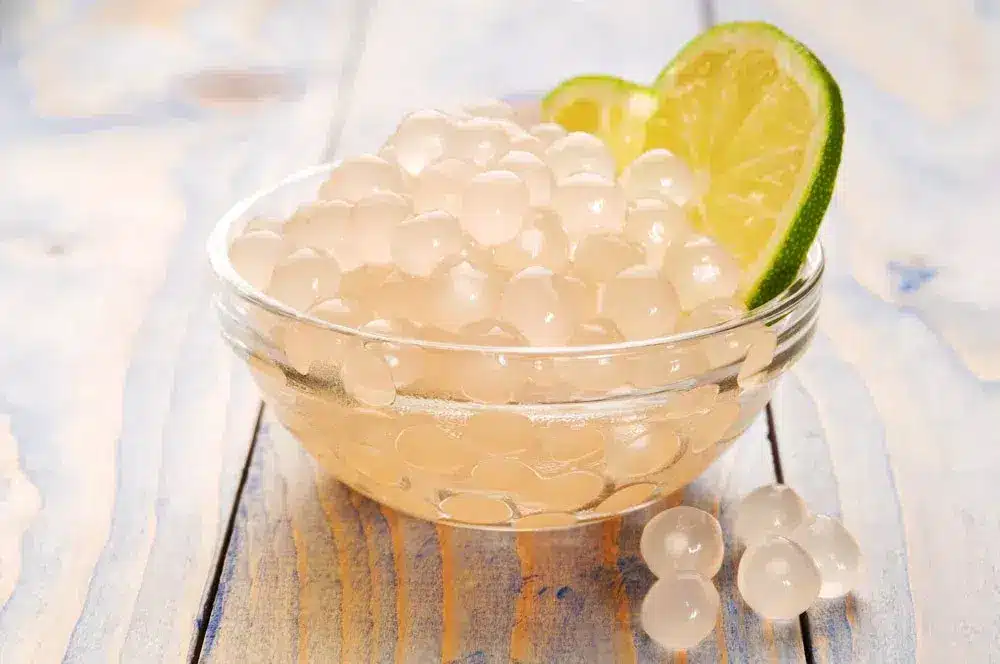Exploring the Delicate Flavours of White Pearl Bubble Tea

A Gem in the Bubble Tea World: Origins of White Pearl Bubble Tea
In a surprising revelation, tapioca, often synonymous with the black boba balls in bubble tea, is actually naturally white or beige. In this blog, we will delve into the world of white tapioca, emphasising its natural colour and unveiling its unique characteristics. Our intention is to not only expand your knowledge but also to inspire you to consider white tapioca balls as a potential addition to your menu or an option waiting to be explored!
When cooked, the white pearls become translucent, giving them a slightly golden hue. White tapioca has a neutral taste like the black tapioca balls but is less sweet. Like the other tapioca balls, it is also coated in hazelnut syrup or brown sugar syrup. As a result, the mild sweetness and subtle flavour make it a versatile choice, appealing to both seasoned bubble tea enthusiasts and newcomers alike, especially for those who don’t have a sweet tooth.
White Pearl Ingredients: A Closer Look
The foundation of White Pearl Bubble Tea is the same as any original milk tea. What makes it special is the white tapioca pearls. Although they are prepared the same way, what distinguishes them from the typical black tapioca balls is of course their appearance and taste. The typical boba that you see is that colour because of the process of preparing them. It involves the pearls being boiled or simmered in a sugar solution containing brown sugar or caramel. As a result, the pearls absorb a mild sweetness from the sugar, which is why the typical boba balls are much sweeter than the white tapioca pearls. Not only does the white boba make the drink look more interesting, but it also makes the overall experience milder, allowing you to experience the richness of the other elements in the drink like the tea and the milkiness.
Healthy Sips: Nutritional Profile of White Pearl Bubble Tea
White Pearl Bubble Tea offers surprising health benefits because they are filled with calcium, iron and vitamin D and are a low-fat source of energy. When compared to the black tapioca balls, the white tapioca pearls emerge as a healthier option with lower sugar content so it is the perfect option for a healthy alternative of bubble tea. Generally speaking, tapioca balls are also easily digestible, according to Dr. De Latour (a gastroenterologist and assistant professor of medicine at NYU Langone Health). However, just like everything else, it is important to eat it in moderation.
Elevate the Experience: Pairings and Flavour Variations
White tapioca pearls are not a staple when it comes to bubble tea toppings but their uniqueness makes them a perfect addition for holiday or themed drinks. For instance, it is a great addition to Christmas bubble tea drinks as they resemble snowballs and add to the overall winter theme. Or for Halloween, it can resemble bones or add to the spooky vibe. Ordering less sweet means putting in less fructose but there is no option of ordering less sweet tapioca balls. Offering white tapioca to your menu, not only allows flair for creativity and the opportunity to go all out, it also offers customers a new and unique experience with bubble tea.
On the whole, White Pearl Bubble Tea is a demonstration of variety in bubble tea, not only in teas and flavours. It is definitely an underrated drink waiting to be discovered and explored.
